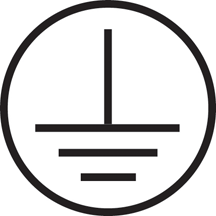What's in a Name?
01 Mar 2022
What's in a Name?
I'm always battling against engineers and their managers who think that calling a conductor a different name makes it behave differently.
So, they assume that anything called earth or ground (or ‘deck’, ‘chassis’, ‘frame’, etc.) must therefore have zero Ohms (i.e. 0.000000 Ohms) at any frequency. Even if it is a green/yellow striped wire 2 metres long.
And they assume that any metal (or good conductor) that is not actually called a shield, doesn't behave as a shield and must therefore allow RF currents to flow from one of its sides straight through to its other.
And they assume that only things that are called antennas actually behave like antennas. i.e. coupling RF energy to/from the medium they are in (usually air).
It doesn’t help that SPICE simulators make all the above assumptions too, because they ignore the intrinsic nature of electromagnetic propagation – choosing instead a grossly simplified view.
SPICE’s approach is the same as almost all circuit-design textbooks, which ignore the fact that electrical currents cannot ever be separated from local near-fields, and vice-versa. And of course, local near-fields are caused by, or cause, far fields.
These days, with ordinary low-cost digital semiconductors switching in well under 1ns, and the environment becoming saturated with RF up to 6GHz (until 5G gets going properly, when it will be up to 28GHz, at least), this old-fashioned circuit design approach guarantees that anything designed using this approach will not function reliably in real life, and will not comply with any EMC regulations imposed by the developed nations, without an awful lot of post-design messing around (usually called ‘development’).
But in fact: anything made of metal (or any reasonable conductor), whatever name we give it:
- Always shields one of its sides from the other to some degree,
– as a function of frequency due to its skin effect.
- Always has intrinsic series inductance,
– which is why superconductors can only achieve zero (i.e. 0.000000) Ohms at DC (0.0000Hz) and above that frequency any conductor always has a non-zero impedance.
- Always has mutual inductances with other conductors,
– which means current changes in one conductor always couple voltage changes into any other, to some degree.
- Always has intrinsic 'space charge' capacitance,
– which means that changing the voltage on any conductor, even when it is not part of a circuit, always requires current to charge/discharge it.
- Always has mutual capacitances with any/all other conductors,
– which means voltage changes on one conductor always couple current changes into any other conductor, to some degree.
- Always acts as an antenna,
– either intentionally or unintentionally – there is no such thing as a conductor that is not also an antenna (although it might be a very poor one), i.e. that changes in the voltages and currents on/in any conductor always create local near-fields (= transmission), and vice-versa (= reception).
These days, not taking these real-life issues into account in all hardware design, guarantees unpredictable delays in time-to-market, unpredictable but always excessive cost of manufacture, and unpredictably increased financial risks.
It all sounds very complex and difficult, but really it isn’t.
I’ve been teaching the correct approach to practising engineers since the mid-90s, with 100% success for those who learnt and applied what I told them – if you would like to see my training 'live' in 2022, visit here for more details
Get more from EMC Standards
EMC Standards is a world-leading resource for all things EMC and EMI related. Our website is packed full of both free and paid-for content, including:
- Online quiz
- Webinars
- Training quiz
- And much more!

Electromagnetic Engineering (EMgineering) is the basis for proven good design practices for signal integrity (SI), power integrity (PI), and the control of EMI emissions and immunity (EMC).
Our aim is to help people learn how to more quickly and cost-effectively design and manufacture electronic equipment (products, systems, installations, etc.) to meet functional (i.e. SI/PI) specifications and conform to EMC standards, directives and other requirements.
Such equipment should benefit from reduced warranty costs and financial risks, whilst improving uptime, competitiveness and profitability.
We also cover basic good electrical safety engineering; and the Risk Management of Electromagnetic Disturbances / EMI, whether for Functional Safety or other types of risk.
Join EMC standards TODAY!
